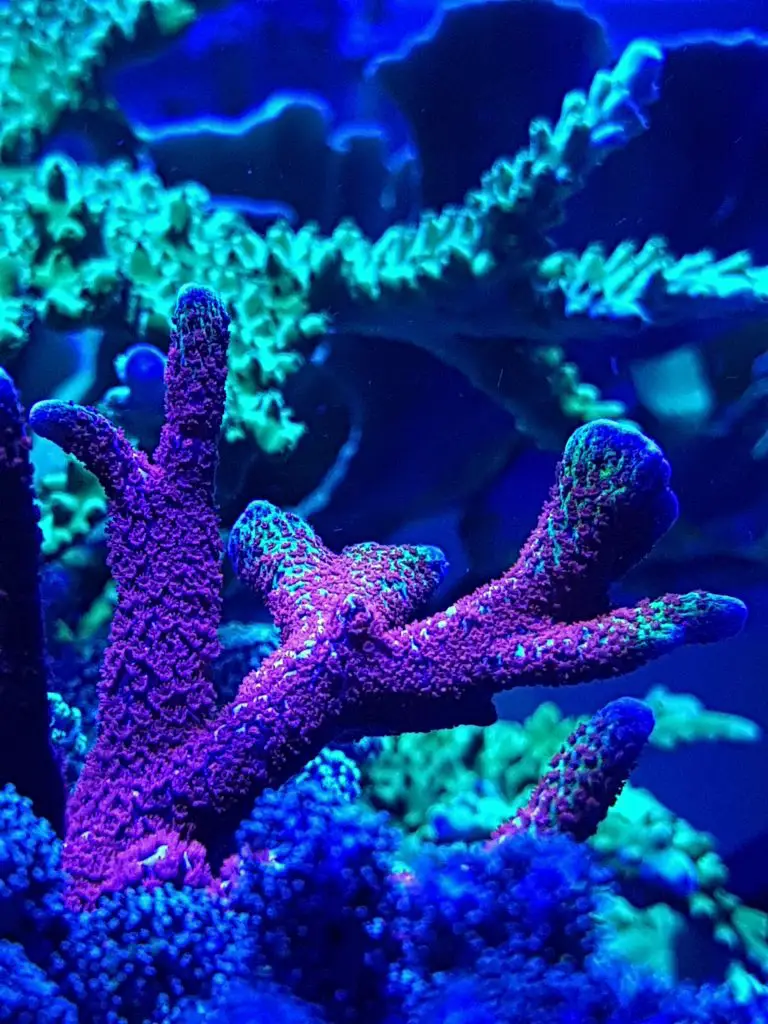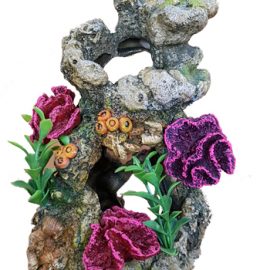How to run a saltwater aquarium with no water changes
From the outset of this article it is important to point out that running a saltwater aquarium with no water changes is borne out of necessity. It is simply the need to meet the demands of your tank while minimising unwanted water fluctuations.
Quick Links:
- Understanding the importance of water changes
- Why do reef keepers decide to stop water changes?
- How do you replace water changes with no water changes?
- What are the benefits of no water changes?
- Can doing without water changes ever be bad for your aquarium?
- Do you need a refugium without water changes?
Understanding the importance of water changes
Although this title may sound counterproductive, just stick with it. Before considering running your tank with no water changes, it is necessary to understand why they are undertaken.
What exactly is the purpose of carrying them out in the first place?

Replenishment of major and trace elements
No matter what brand of aquarium salt you have chosen to use, it has been specifically formulated to not only include the salt that maintains the correct salinity, but also a mix of major and trace elements.
Major elements are comprised of carbonate (KH), calcium(Ca) and magnesium(Mg). These three elements are essential in coral growth, snail shell growth and the proliferation of coralline algae.
Trace elements are also very important to the wellbeing of your aquariums inhabitants, especially corals. By carrying out a water change you are replenishing major and trace elements that have been utilised by your coral, and to a lesser extent, your fish and invertebrates.
Export of nutrients
The primary reason water changes are carried out is for the export of nutrients, nutrients being nitrate and phosphate. By siphoning your live rock and sifting gently through your sand you are having a direct impact on the nutrients being held in your system.
Replacing the siphoned water with newly mixed water, you are diluting the nutrient concentrate because new water does not contain nitrate and phosphate.
Why do reef keepers decide to stop water changes?
Knowing the importance of water changes, why would a saltwater aquarium owner put his tank at risk by running it without, you might ask?
The truth is the choice is taken not out of laziness, but out of a need to provide for your coral.
The decision to stop is, in the most part, undertaken by reefers who keep SPS coral and sometimes by those who keep LPS too. In the course of keeping coral, they have come to a point where they no longer provide the KH, Ca and Mg required or the abundance of trace elements, nor do they export the amount of nutrient needed to care successfully for the coral.
It is at this point they turn to dosing. They begin dosing of the major elements as well as the trace elements to meet the shortfall of the water changes.
Nutrient export has become incredibly easy over the years too. Water changes are no longer the go-to method for removing phosphate and nitrate any longer. Saltwater aquariums keepers can now use additives and absorbers from several different brands to maintain perfect nutrient levels.
In essence, reef keepers decide to stop for ultimate control of all parameters which minimises unwanted fluctuations.
How do you replace water changes with no water changes?
To begin running your saltwater aquarium without water changes you need to understand your systems requirements first.
Its safe to say that if you are not at the stage where dosing has become essential, and regular water testing has not become a religion, then having perfect parameters is not something you are trying to achieve just yet.
If however, you are auto dosing to meet your coral requirement, have robust phosphate and nitrate export methods in place such as GFO in a reactor, or using Red Sea NOPOX, then you are in a position to stop. The next step is to make sure that you have all the systems in place prior quitting the regular changes.
Without changing water you will need to provide not only KH, Ca and Mg (which you are probably already auto dosing), but trace elements too. I manually dose my trace elements every evening and send my water off for analysis with Triton every three months to ensure all is okay.
You will no longer be thinking about removing excess nutrients with water changes. Make sure you change out your phosphate remover like clockwork, and/or try not to miss doses. I use NOPOX every evening, and also keep my phosphate down with a product called Rowaphos which I change out every 4 weeks regardless of test kit results.
As a bit of a disclaimer – the above is how I run my tank successfully. You may have an aquarium deficient in nitrate or phosphate that needs nutrient dosing. The last thing you would want to do is put nutrient export procedures in place for a nutrient deficient system.
If you are interested in nitrate dosing click here
For phosphate dosing click here
Dosing of either of the above is safe. My frag tank is phosphate deficient into which a dose of 5ml of Tri-sodium phosphate is added daily.
What are the benefits of no water changes?
Running a saltwater aquarium without has a number of benefits apart from no longer relying on the water changes for replenishment of elements and nutrient export.
Fluctuation in water parameters
Carrying out water changes, depending on the volume of new water exchanged, has the potential to cause significant fluctuations. Consider the salt you are using: You are reliant on the manufacturer of the salt supplying the major and trace elements in the concentration listed on the bucket.
By the time you have carried out the water change, and then re-tested the levels, the job is already done. You are working on a reactive basis.
If you start running your tank without you are taking full control, no longer reactive but proactive. You have the final say on the levels (not the salt manufacturer). With ultimate control of your parameters comes almost no fluctuations, which means happy coral.
Less messing in your tank
With water changes comes disruption in your display. Before I changed over I had a few incidences of inadvertently breaking coral while trying to get to back corners of the tank.
Some aquariums have sensitive fish. In mine I have a Regal tang that would hide for an entire day after a water change was done.
There may be those who carry out water changes from their sumps, which does not impact on the display. But that requires a pump, or at least a little height to draw water out, so I did find it easier siphoning from my display.

Can no water changes ever be bad for your aquarium?
As long as you are systematic, or put procedures in place that are systematic, and make sure you follow them through you are unlikely to create a negative environment in your tank.
When it comes to the cleanliness within your display, you will be relying on your clean up crew and the efficiency of your establish nitrifying and denitrifying bacteria. Your pod population should be able to sustain itself at natural levels by feeding on the detritus created and also the occasional addition of live phytoplankton.
However, never assume that you have used your last bucket of salt mix. Always have some handy. At the very least you will need it for acclimation of fish and inverts.
Do you need a refugium with no water changes?
The idea of having a refugium with a system that is run with no water changes came from Triton. The refugium is another method of exporting nutrients from the system.
It really come down to how you prefer to run a saltwater aquarium. A refugium will provide a safe harbourage for pods to breed and it will control nitrate, but like every other method it has to be closely monitored.
It is not unknown for a refugium to strip a system of nutrients causing a crash.
So there you have it...
Running a system without water changes is a decision that you as an accomplished reefer will need to make.
I have not carried out any in 5 years (for the sake of carrying out water changes).
I have needed to siphon my gravel to defeat dinoflagellates. I replaced 20% of my water volume for three weeks in a row, but I don’t count these.
The control gained from proactive dosing and nutrient export has really been the best thing I did for my tank, but it does take dedication and not a small amount of my time to ensure all criteria are met.


